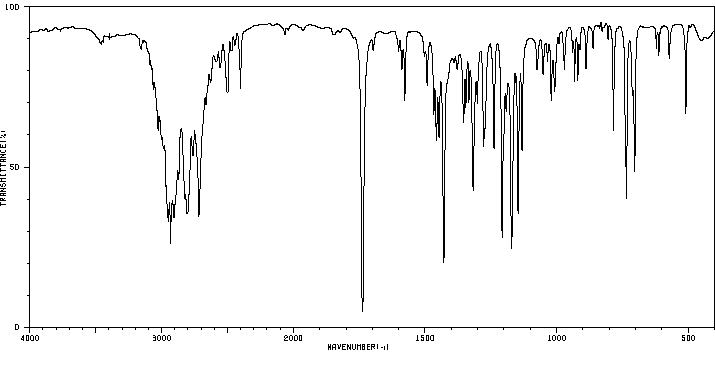毒理性
哺乳期使用总结:在用于医疗指征的剂量下,有限的证据表明,甲基phenidate在乳汁中的水平非常低,在婴儿血清中检测不到。如果母亲需要服用甲基phenidate,这不是停止哺乳的理由。高剂量的甲基phenidate可能会干扰乳汁生产,尤其是在哺乳期未建立良好的妇女中。
对哺乳婴儿的影响:8名婴儿中有7名,其母亲服用右旋苯丙胺(平均剂量每日25毫克)或甲基phenidate(平均剂量每日52毫克)接受了临床评估。这些婴儿没有药物相关的不良反应,并且按照他们的年龄(平均4.4个月)正常发育。
一名6.4个月大的婴儿主要接受一名母亲的哺乳,该母亲在过去5.5周内每周5天服用甲基phenidate 40毫克,每天两次。母亲报告说,婴儿的睡眠、饮食和体重增长都正常。这个病人可能是上述同一作者报告中的其中一人。
一名母亲在分娩后5周开始服用舍曲林50毫克/天和甲基phenidate,并哺乳婴儿(哺乳程度未说明)。剂量从每日10毫克即释产品开始,逐渐增加到每日72毫克缓释产品。在14周龄时,婴儿在无喂养困难的情况下正常发育。6个月和1岁时的检查发现孩子没有发育问题。
一名哺乳母亲服用缓释甲基phenidate(Concerta)36毫克/天和度洛西汀90毫克/天治疗ADHD、广泛性焦虑症、边缘型人格障碍和抑郁症。她部分哺乳(量未说明)约1个月。在6个月大时,婴儿的发育被认为是正常的,除了由先天性肺气道畸形引起的复发性肺炎。
一名患有嗜睡症的女性在怀孕期间停止服用甲基phenidate,但在怀孕和产后期间继续服用舍曲林100毫克和孕妇维生素。她挤出母乳用奶瓶喂养,她的婴儿在6个月大之前只接受母乳喂养,并在7个月大时断奶。当她的婴儿13周大时,她恢复了甲基phenidate 10毫克,一天三次。婴儿在6个月大时达到了所有的生长里程碑。
对哺乳和母乳的影响:甲基phenidate降低血清催乳素,但在修订日期之前没有找到关于甲基phenidate对乳汁生产影响的研究。在建立哺乳的母亲中,母体催乳素水平可能不会影响她的哺乳能力。
一名15岁女孩已经接受甲基phenidate 54毫克/天的渗透释放片(OROS)治疗2年。开始服用舍曲林50毫克/天治疗抑郁症,并增加到100毫克/天,同时服用0.5毫克/天的氯丙嗪。治疗12周后,学校注意力不集中和头痛促使从OROS产品改为一种改性释放甲基phenidate产品(品牌未指定),剂量为30毫克/天,然后增加到50毫克/天。剂量增加三天后,女孩双侧乳房自发流出乳汁,随后血清催乳素升高至67.7 mcg/L。甲基phenidate和氯丙嗪被停用,但舍曲林继续使用。一周后,乳汁过多完全解决。停药15天后,女孩的催乳素水平恢复到正常范围,为19.4 mcg/L。
◉ Summary of Use during Lactation:In dosages prescribed for medical indications, limited evidence indicates that methylphenidate levels in milk are very low and not detectable in infant serum. If methylphenidate is required by the mother, it is not a reason to discontinue breastfeeding. It is possible that large dosages of methylphenidate might interfere with milk production, especially in women whose lactation is not well established.
◉ Effects in Breastfed Infants:Seven of 8 infants, whose mothers were taking either dextroamphetamine (average dosage 25 mg daily) or methylphenidate (average dosage 52 mg daily) were clinically evaluated. The infants had no drug-related adverse reactions and were developing normally for their ages which averaged 4.4 months.
One 6.4-month-old infant was mostly breastfed by a mother who had been taking methylphenidate 40 mg twice daily 5 days/week for 5.5 weeks. The mother reported that the infant was sleeping, eating and gaining weight normally. This patient might have been one of those in the report above by the same authors.
An infant was being breastfed (extent not stated) by a mother who began taking sertraline 50 mg daily and methylphenidate after 5 weeks postpartum. Dosage was started at 10 mg daily with an immediate-release product and gradually increased to 72 mg daily of an extended-release product. At 14 weeks of age, the infant was developing normally with no feeding difficulties. Examinations at 6 months and 1 year of age found no developmental problems in the child.
A nursing mother was taking extended-release methylphenidate (Concerta) 36 mg daily and duloxetine 90 mg daily for ADHD, generalized anxiety disorder, borderline personality disorder, and depression. She partially (amount not stated) breastfed her infant for about 1 month. At 6 months of age, the infant's development was considered to be normal, except for recurrent pneumonia caused by congenital pulmonary airway malformation.
A woman with narcolepsy discontinued methylphenidate during pregnancy, but continued sertraline 100 mg and a prenatal vitamin daily during pregnancy and postpartum. She expressed breastmilk for bottle feeding and her infant was fed breastmilk exclusively until 6 months of age, and was weaned at 7 months. When her infant was 13 weeks old, she resumed methylphenidate 10 mg three times daily. The infant met all growth milestones through 6 months of age.
◉ Effects on Lactation and Breastmilk:Methylphenidate reduces serum prolactin, but no studies have been located as of the revision date on the effect of methylphenidate on milk production. The maternal prolactin level in a mother with established lactation may not affect her ability to breastfeed.
A 15-year-old girl had been receiving methylphenidate 54 mg daily in an osmotic release tablet (OROS) for 2 years. Sertraline was started for depression at 50 mg daily and increased to 100 mg daily along with haloperidol 0.5 mg daily. After 12 weeks of therapy, inattentiveness at school and headaches prompted a change from the OROS product to a modified-release methylphenidate product (brand not specified) at 30 mg daily, then increasing to 50 mg daily. Three days after the increase in dosage, the girl had spontaneous milk flow from both breasts and subsequently had an elevated serum prolactin of 67.7 mcg/L. Methylphenidate and haloperidol were discontinued, but sertraline was continued. One week later, galactorrhea resolved completely. Fifteen days after drug discontinuation, the girl's prolactin level was in the normal range at 19.4 mcg/L.
来源:Drugs and Lactation Database (LactMed)







